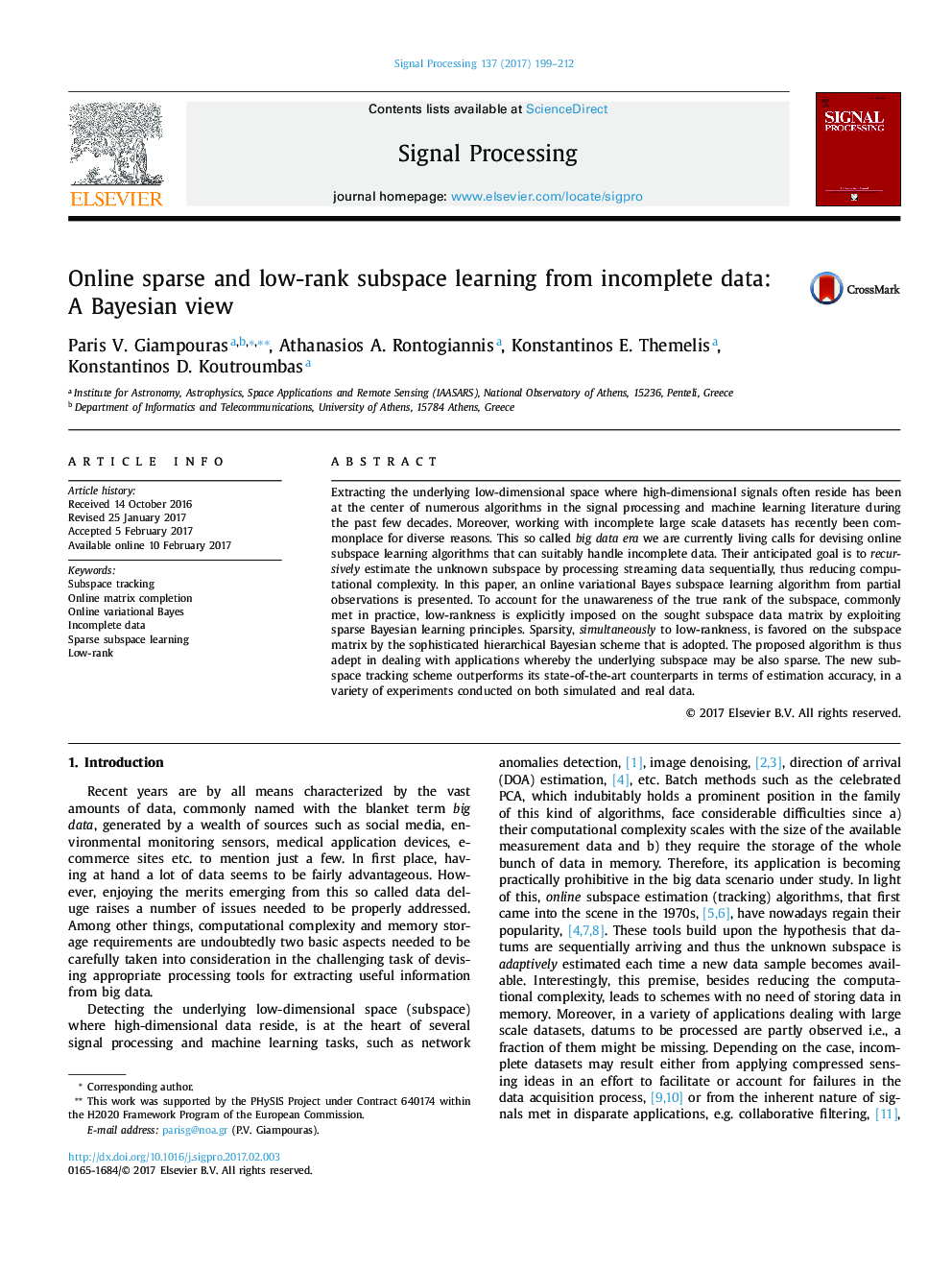| Article ID | Journal | Published Year | Pages | File Type |
|---|---|---|---|---|
| 4977667 | Signal Processing | 2017 | 14 Pages |
Abstract
Extracting the underlying low-dimensional space where high-dimensional signals often reside has been at the center of numerous algorithms in the signal processing and machine learning literature during the past few decades. Moreover, working with incomplete large scale datasets has recently been commonplace for diverse reasons. This so called big data era we are currently living calls for devising online subspace learning algorithms that can suitably handle incomplete data. Their anticipated goal is to recursively estimate the unknown subspace by processing streaming data sequentially, thus reducing computational complexity. In this paper, an online variational Bayes subspace learning algorithm from partial observations is presented. To account for the unawareness of the true rank of the subspace, commonly met in practice, low-rankness is explicitly imposed on the sought subspace data matrix by exploiting sparse Bayesian learning principles. Sparsity, simultaneously to low-rankness, is favored on the subspace matrix by the sophisticated hierarchical Bayesian scheme that is adopted. The proposed algorithm is thus adept in dealing with applications whereby the underlying subspace may be also sparse. The new subspace tracking scheme outperforms its state-of-the-art counterparts in terms of estimation accuracy, in a variety of experiments conducted on both simulated and real data.
Related Topics
Physical Sciences and Engineering
Computer Science
Signal Processing
Authors
Paris V. Giampouras, Athanasios A. Rontogiannis, Konstantinos E. Themelis, Konstantinos D. Koutroumbas,
